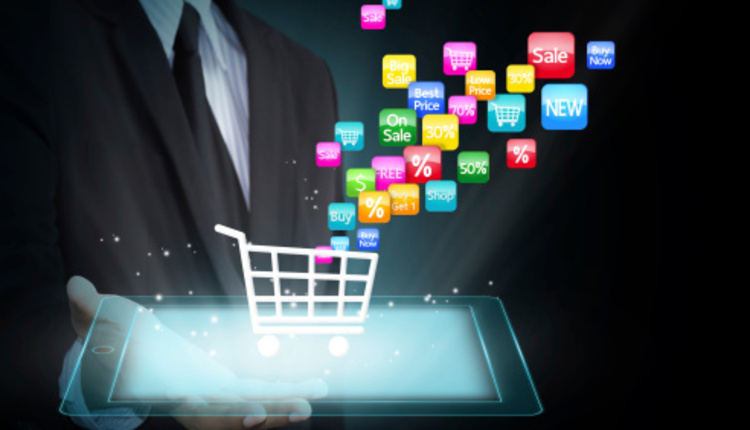Panel discussion topic: Successful strategies transforming information into new sources of business value.
Comments by panelist Jeetu Patdla, a Doculab Consultant; "Innovative use of information is not changing corporations as much as transforming entire industries." For example, consider how Netflix's mail order movie DVDs service model has impacted Blockbuster's bricks and mortar movie DVD rental business.
Similarly consider Amazon.com's use of "client data" of suggesting other books by the same author or similar topical books to the one just purchased a few days earlier. What impact has this personalized knowledge interpretation by Amazon had on the Barnes & Noble business model? The difference is much more than Internet purchasing versus bricks and mortar retailing. This is utilizing pattern recognition software, which is not in violation of any privacy interpretations.
Printers impact: The e-mail suggestion by Amazon that the customer might find a similar book or another book by the same popular author worth purchasing is a fascinating use of variable personalized information.
But of the myriad such "interesting" come-ons that I have received from Amazon, I have never taken advantage of any offers despite my potential interest.
And the reason is simple. It was not top-of-mind to me at the time.
However, if I had received a post card from Amazon with the same recommendation showing the four-color cover of the suggested book, I might well have saved the post card for later consideration.
The well recognized 3M Post-it notes were converted to "Repositionable Notes" to be attached to the outside of mailed envelopes or to the covers of mailed periodicals. This was a USPS innovation, which has resulted in surprisingly positive consumer response. The note has an offer and URL for placing an order. It has turned out that interested prospects have taken the repositionable note off the envelope and attached it (remember the sticky backing) to a corner of their computer monitor or some place convenient to be considered later. Statistical research has indicated that this little reminder often results in a purchase decision as much as two and even three weeks after receiving the note.
So some bright printer is going to approach Amazon with a multi-media program. Amazon no doubt knows the response rate for their customized e-mail appeal. The printer's idea to complement that same appeal with a mailed offer will be easy to track the effectiveness (and return on
investment) of this "retainable" tickler.
At the very least Amazon will begin to tag those customers who needed a little extra time to consider the offer or check personal references among friends who might have heard of or read the second book recommended. Or who knows, maybe Barnes & Noble could build a database of their clients' topical and author preferences and initiate a multi-media offer including an offer for a dollar off their Seattle's Best coffee when the prospect comes in to look at the book.
To read Part 1 of Clint's synopsis, click here.
Comments by panelist Jeetu Patdla, a Doculab Consultant; "Innovative use of information is not changing corporations as much as transforming entire industries." For example, consider how Netflix's mail order movie DVDs service model has impacted Blockbuster's bricks and mortar movie DVD rental business.
Similarly consider Amazon.com's use of "client data" of suggesting other books by the same author or similar topical books to the one just purchased a few days earlier. What impact has this personalized knowledge interpretation by Amazon had on the Barnes & Noble business model? The difference is much more than Internet purchasing versus bricks and mortar retailing. This is utilizing pattern recognition software, which is not in violation of any privacy interpretations.
Printers impact: The e-mail suggestion by Amazon that the customer might find a similar book or another book by the same popular author worth purchasing is a fascinating use of variable personalized information.
But of the myriad such "interesting" come-ons that I have received from Amazon, I have never taken advantage of any offers despite my potential interest.
And the reason is simple. It was not top-of-mind to me at the time.
However, if I had received a post card from Amazon with the same recommendation showing the four-color cover of the suggested book, I might well have saved the post card for later consideration.
The well recognized 3M Post-it notes were converted to "Repositionable Notes" to be attached to the outside of mailed envelopes or to the covers of mailed periodicals. This was a USPS innovation, which has resulted in surprisingly positive consumer response. The note has an offer and URL for placing an order. It has turned out that interested prospects have taken the repositionable note off the envelope and attached it (remember the sticky backing) to a corner of their computer monitor or some place convenient to be considered later. Statistical research has indicated that this little reminder often results in a purchase decision as much as two and even three weeks after receiving the note.
So some bright printer is going to approach Amazon with a multi-media program. Amazon no doubt knows the response rate for their customized e-mail appeal. The printer's idea to complement that same appeal with a mailed offer will be easy to track the effectiveness (and return on
investment) of this "retainable" tickler.
At the very least Amazon will begin to tag those customers who needed a little extra time to consider the offer or check personal references among friends who might have heard of or read the second book recommended. Or who knows, maybe Barnes & Noble could build a database of their clients' topical and author preferences and initiate a multi-media offer including an offer for a dollar off their Seattle's Best coffee when the prospect comes in to look at the book.
To read Part 1 of Clint's synopsis, click here.






